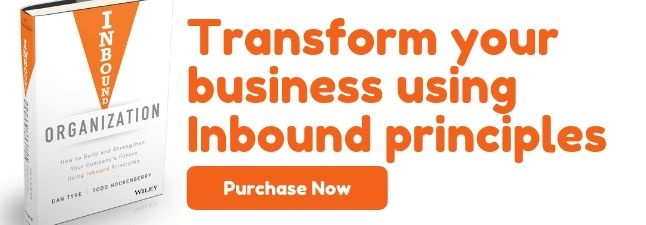Posted by Todd Hockenberry ● Jul 16, 2021
Do You Have a Customer Focused Mindset?
How do you view your buyers?
Do you see them as an opportunity to close? A name on a list to call at a certain prescribed interval?
Or as a person that you need to connect with as a unique individual and create custom experiences with?
 The old formula of hiring a salesperson, going to the same trade shows (even virtual ones), knocking on a prospect's door, and cold calling no longer work to build a predictable revenue stream.
The old formula of hiring a salesperson, going to the same trade shows (even virtual ones), knocking on a prospect's door, and cold calling no longer work to build a predictable revenue stream.
Oh sure, you can win some deals and maybe even grow. But these tactics will not lead to a predictable revenue-generating stream at the level you might anticipate.
Buyers and how they find information, evaluate options, consider vendor choices, and make decisions have changed drastically in the past 18 months. Has your thinking about buyers changed at all, or are you just waiting for things to get back to normal, whatever that is anymore?
To create predictable revenue growth, leaders need to change their thinking about how they view buyers and what they really want.
The companies that survive and thrive with predictable revenue engines in the post-COVID age of even more buyer control will be the ones that become inbound organizations – ones that are built for and solve for the customer at every step in the buying process, where everyone in the company is aligned around the goals of the customer, and fully invested in the ultimate success of the customer.
“Many companies recognize the need to change marketing tactics, to use content, develop a digital marketing presence, and adapt to the ability of buyers to control the process. Few see it as fundamental to the operation, structure, and strategy of the entire organization.” *
Culture of Customer First
"The first and most important step is to shift the organization’s mindset to focus on solving for the customer. Make decisions based on what’s in their interest—because what’s in the customer’s interest is in the organization’s interest too." Dharmesh Shah, HubSpot*.
“Hold on,” you say; we put the customer first. The mission statement on the wall in the front office - that no one in your company actually reads - says we are customer-focused, so we must be.
The owner/President says all the time we put the customers first. But do you really?
Maybe your sales team does, or is the quota you assigned this quarter the most important thing?
Maybe your product team does, but do they survey customers regularly to understand what features they want, or are they just guessing?
But does your back office, or are they concerned about getting the transaction completed on their time frame, with no human connection to the customer, hiding behind policies, office hours, and terms and conditions?
Does your service team, or do they react when the phone rings and try to make the customer go away and stop complaining at the least possible cost to the company?
Do your customer-facing teams ensure your customers are successful with your product, or do they set it up, get them going, and then forget about them until they have a problem? Do you even really know if your customers are successfully achieving the goals they had when they bought from you in the first place?
I just had an experience with one of our clients using a well-known collaboration tool, and they had over-subscribed (an error I believe caused by unclear subscription terms and requirements). The company sent an email saying they would refund a prorated amount of the pre-paid fee, which is a reasonable response. But wait. Someone then sent a message saying the policy is that they do not issue refunds but that they would tack it on the next year as a credit.
Is that customer-focused? My client asked me to make a note 30 days before the subscription end date to make sure we cancel and move to another service. It wasn’t the money that was the issue; it was the disregard for my client and for not doing the right thing and offering a refund.
See how important it is to have a top-to-bottom culture of customer focus. One lousy policy-driven service experience will ruin the relationship for life. And my client likes to leave reviews and is brutally candid when he does. So now he is a negative influencer for this company.
You cannot hide from delivering bad experiences; you can only fix them or prevent them in the first place.
If your mindset is truly customer-focused, then you have taken the first step to build a predictable revenue-generating machine.
Topics: Inbound Organization, Company Culture




